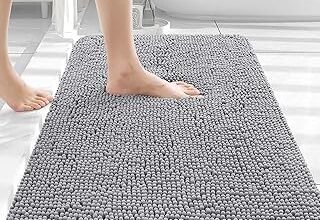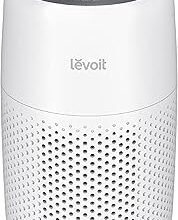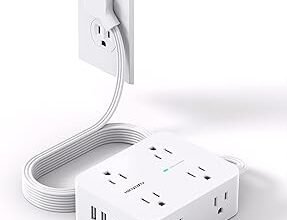Potentially Tricky Spots for Vacuuming: How to Tackle the Challenges

Vacuuming is an essential household chore, one that keeps your living space clean and free of dust, debris, and allergens. However, while most areas of your home are easy to clean with a vacuum, there are certain spots that can pose a challenge. These “potentially tricky spots for vacuuming” require extra attention and sometimes special techniques to ensure your cleaning is thorough and efficient. In this article, we’ll take a closer look at these difficult areas and provide tips for handling them effectively.You know about potentially tricky spots for vacuuming also openrendz.
1. Corners and Edges
One of the most common tricky spots for vacuuming is the corners of rooms and the edges along walls. Over time, dust and debris tend to accumulate in these spaces, but standard vacuum cleaners often struggle to reach them effectively. The typical vacuum nozzle is too wide to fit comfortably into corners, leaving a small area untouched.
Solution: To get into tight corners and edges, use the crevice tool or corner nozzle attachment that comes with most vacuums. These attachments are designed to reach narrow spaces and suck up dust from places that regular nozzles can’t reach. Alternatively, you can try using a handheld vacuum or a vacuum with a flexible hose to tackle corners more easily.You know about potentially tricky spots for vacuuming also openrendz.
2. Under Furniture
Cleaning under furniture is another potentially tricky spot for vacuuming. Large pieces of furniture like sofas, beds, and cabinets can obstruct your vacuum’s path, leaving the floor underneath neglected. Dust, dirt, and crumbs often accumulate in these areas, making it important to clean them regularly.
Solution: Invest in a vacuum cleaner with a low-profile design or one that includes a special attachment for cleaning under furniture. Many modern vacuums offer flat heads or brush rolls that can easily slide under low-clearance furniture. You can also consider using a broom or a long-handled duster to loosen debris before vacuuming it up.
3. Carpets with High Pile
High-pile carpets, such as shag carpets or long-fiber rugs, are notoriously difficult to clean with a standard vacuum. The long fibers trap dirt and dust, and the vacuum can sometimes have trouble pulling debris from deeper within the carpet.
Solution: If you have a high-pile carpet, consider using a vacuum cleaner that is specifically designed for this type of carpet. These vacuums typically have more powerful suction and special brush rolls designed to agitate the fibers and lift dirt. You may also want to adjust the vacuum’s height setting to allow for better suction on taller fibers.
4. Pet Hair on Furniture and Carpets
For pet owners, one of the most challenging aspects of vacuuming is getting rid of pet hair. Pet hair tends to cling to upholstery, carpets, and even hard floors. It can be difficult to remove, and even if you vacuum regularly, pet hair can still be left behind.
Solution: Use a vacuum cleaner with a pet hair attachment, as these tools are specifically designed to grab stubborn pet hair from surfaces. Another great option is a vacuum with a rotating brush head that can loosen hair from fibers, making it easier to suck up. For upholstery, a handheld vacuum or a specialized upholstery tool can help clean furniture effectively.
5. Stairs
Vacuuming stairs can be one of the trickiest spots, particularly if you have a lot of stairs in your home. Due to the narrow and vertical nature of stairs, a traditional vacuum is often difficult to maneuver, making it easy to miss certain spots.
Solution: The best option for vacuuming stairs is a lightweight, handheld vacuum that can be easily carried and maneuvered up and down each step. Many vacuums come with a stair tool attachment designed to handle this challenge. If you don’t have a handheld vacuum, consider using a vacuum with a hose extension, which will allow you to reach each step without lifting the vacuum itself.
6. Under Appliances
Another tricky area for vacuuming is under large kitchen appliances, such as refrigerators, dishwashers, and stoves. These areas tend to accumulate dust, food particles, and even pests, but they are often difficult to access.
Solution: A vacuum with a flexible hose and crevice tool attachment is the best way to clean under appliances. Some vacuums even offer specialized attachments for cleaning tight spaces. If the space is very narrow, you may need to pull out the appliance carefully to access the area fully. Regular cleaning under appliances helps prevent buildup, so make it part of your routine.
7. Around Cables and Wires
Homes with multiple electronic devices, computers, and entertainment centers often have wires and cables strewn across the floor. These can be tricky when it comes to vacuuming, as the vacuum’s nozzle may get caught in the cords, or the vacuum may not effectively clean the area due to the obstruction.
Solution: Before vacuuming, make sure to move any loose cables or wires out of the way, or use a cord management system to keep them bundled together. If this isn’t possible, try using a vacuum with a hose and a soft attachment, so you can carefully clean around the wires without damaging them.
8. Tiled or Grouted Floors
While tile floors are relatively easy to clean with a vacuum, the grout lines can pose a challenge. Dust and dirt often accumulate in these tiny grooves, and regular vacuuming can fail to clean them thoroughly.
Solution: Use a vacuum with a brush nozzle attachment to help agitate the grout lines and lift dirt from the small spaces. For deep cleaning, consider using a vacuum with a wet-dry function that can remove dirt and moisture from the grout. You can also scrub the grout with a specialized grout brush to remove stubborn buildup, and then finish by vacuuming the area.
Conclusion
Vacuuming is a task that seems simple but can become challenging when faced with tricky spots around the home. Corners, under furniture, stairs, and other difficult-to-reach areas require extra attention to detail. By using the right tools, such as crevice tools, handheld vacuums, and specialized attachments, you can ensure that every part of your home gets a thorough cleaning. Don’t let these potentially tricky spots deter you—with the right approach, you can keep your home spotless and healthy.



